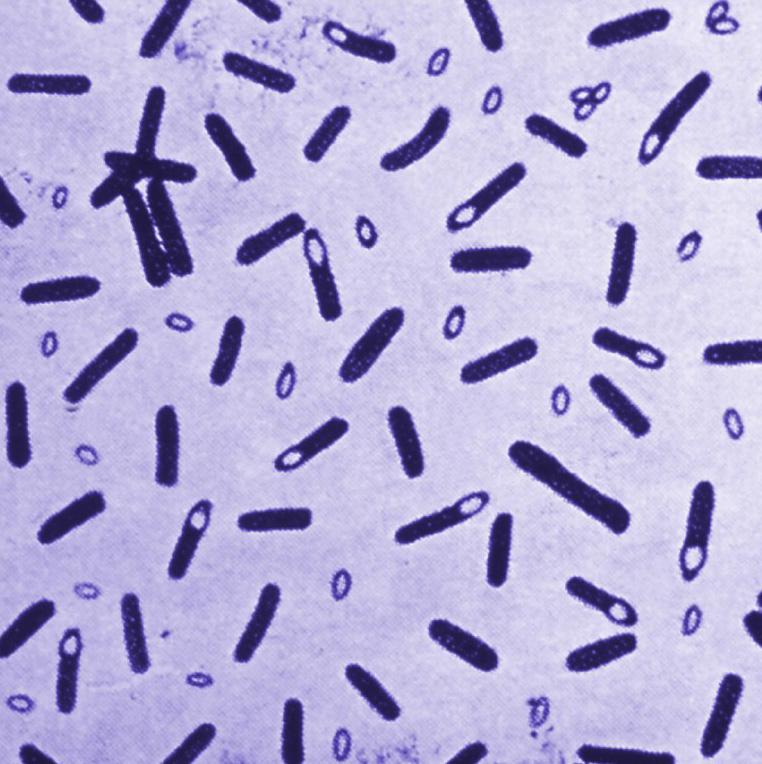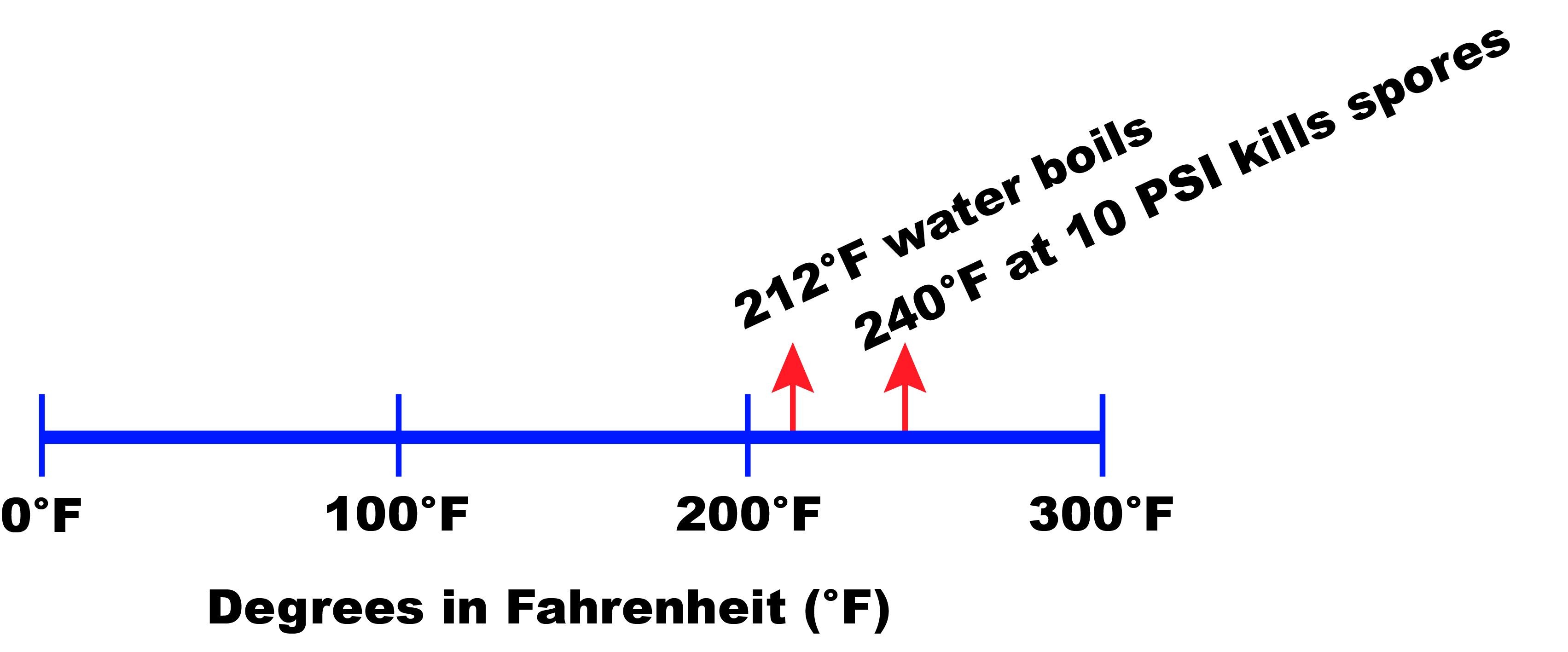
FS-1031 | December 2015
Clostridium botulinum: A Food Safety Risk to Home Food Preservation
What is Clostridium botulism?
Clostridium botulinum (referred to as C. botulinum in this publication) is a spore-forming anaerobic bacterium that produces a potent neurotoxin. An anaerobic bacterium survives in low-oxygen environments, such as home-canned foods. C. botulinum is found naturally in the soil, water, and intestinal tracts of marine animals, mammals and humans, but does not cause illness.
There are seven types of recognized botulism–serotypes A through G. Toxins A, B, E, and F–cause foodborne illness in humans. It does not take much toxin to cause illness.
Doctors must identify the type of botulism toxin so they can provide the correct antitoxin treatment. Testing the food or taking a biological sample from an ill person can help identify the correct antitoxin to administer.

|
The Symptoms of Botulism |
||
|
||
|
||
| Adult symptoms may include but are not limited to: | ||
|
|
|
| More seriously-respiratory failure leading to possible death | ||
|
SEEK IMMEDIATE MEDICAL TREATMENT |
||
Botulism Rarely Occurs in Commercially Canned Food
The majority of C. botulinum outbreaks in 1998-2008 occurred in private homes. During the 10-year period, 33 foodborne-botulism outbreaks caused 121 illnesses, 88 hospitalizations and six deaths. The death rate from foodborne-botulism is currently 3-5% compared to 60-70% until the 1940s-1950s. Better detection and treatment methods, as well as fewer people home canning contributed to the lower death rate.
While there are Different Kinds of Botulism, Some are Very Rare
- Foodborne botulism- Occurs after eating food contaminated with the toxin.
- Infant botulism- Consuming food with the C. botulinum bacterium that will later release the botulism toxin.
- Adult intestinal toxemia botulism- Rare but follows the same route of infection as infant botulism.
- Inhalation botulism- Results from breathing in botulinum toxin as an aerosol, but is rare.
- Wound botulism- Occurs when C. botulinum spores contaminate a wound.
- Iatrogenic botulism- Caused during the injection of botulinum toxin during cosmetic (e.g. Botox) or non-cosmetic (e.g. thyroid dysfunction-induced upper eyelid retraction) procedures.
C. botulism Exists in Two Forms
Endospore is the dormant stage where the bacterium is tolerant of high temperatures. When environmental conditions are right, the endospore will become “active” in its other form as a vegetative cell that is able to grow and produce the botulism toxin.
Destroying Endospores during Food Preservation Requires High Temperatures
Endospores are a concern during home food preservation because they are resistant to normal cooking and processing temperatures. Improper processing by
consumers has led to single occurrences and multiple cases when homemade food contaminated with botulism was served at events.
- Knowing if a food is low-acid will help home food preservers decide if a food should be processed in a water bath canner or a pressure canner.
- Low-acid foods have a pH value of 4.6 and higher (up to14.0 pH). Vegetables, meat, fish, dairy, poultry, and seafood are low-acid foods and require processing in a pressure canner.
- To destroy endospores in low-acid foods during home canning, the temperature needs to be 240°F or higher for a specific length of time to make low-acid canned foods safe to consume. A water bath canner and/or atmospheric steam canner cannot reach 240°F. Low-acid foods must be processed in a pressure canner.

Carefully Follow Guidelines to Prevent Botulism When Home Canning
Before Home Canning
- Follow current (post-1997 recipes) scientifically tested guidelines from So Easy to Preserve, Ball’s Blue Book, or USDA Complete Guide to Home Canning, 2009.
- Do NOT change the current recipe. Research-tested recipes are specifically created to reduce bacterial growth and make a safe and consistent home-preserved product every canner load.
For Successful Low-acid Food Preservation, Make Sure Recipes and Pressure Canner are Tested
When preserving low-acid foods such as vegetables, make sure to:
- Use a pressure canner.
- Check the accuracy of the pressure dial gauge each canning season at your local University of Maryland Extension office.
- Follow current recipes that have been research-tested.
- Recipes prior to 1997 are not considered “current” and should not be used.
The Signs of Contamination after Home Canning are Distinct
- The food is discolored, moldy, or smells bad.
- The container:
- is leaking, bulging, or swollen;
- looks damaged, cracked, or abnormal;
- spurts liquid or foam when opened; or
- the food is discolored, moldy, or smells bad
What If You Suspect Home Canned Food is Contaminated with C. botulism?
- When in doubt, throw the food out.
- Do not open or puncture any unopened cans, commercial or home canned, if you think it is contaminated.
- Thoroughly inspect the food when you open a jar of home-canned food. Do not taste or eat foods that are discolored, moldy, or smell bad. Do not eat food from a can that spurted liquid or foamed when it was opened.
- If any of the contaminated food spills, wipe it up using a diluted bleach solution of 1/4 cup bleach for each 2 cups of water.
Resources for Home Food Preservation
- The National Center for Home Food Preservation.
- USDA Complete Guide to Home Canning, 2009 revision.
- The University of Maryland Extension State and local offices.
- Centers for Disease Control and Prevention: Home Canning and Botulism.
|
University of Maryland Extension Office Phone Numbers |
|||
| Allegany County | (301) 724-3320 | Harford County | (410) 638-3255 |
| Anne Arundel County | (410) 222-3900 | Howard County | (410) 313-2707 |
| Baltimore County | (410) 887-8090 | Kent County | (410) 778-1661 |
| Baltimore City | (410) 856-1850 | Montgomery County | (301) 590-9638 |
| Calvert County | (410) 535-3662 | Prince George’s County | (301) 868-9366 |
| Caroline County |
(410) 479-4032 |
Queen Anne’s County | (410) 758-0166 |
| Carroll County | (410) 386-2760 | Queen Anne’s County | (301) 475-4482 |
| Cecil County | (410) 996-5280 | Somerset County | (410) 651-1350 |
| Charles County | (301) 934-5403 | Talbot County | (410) 822-1244 |
| Dorchester County | (410) 228-8800 | Washington County | (301) 791-1304 |
| Frederick County | (301) 600-1594 | Wicomico County | (410) 749-6141 |
| Garett County | (301) 334-6960 | Worchester County | (410) 632-1972 |
References
- http://www.cdc.gov/
- http://www.cdc.gov/features/homecanning/
- http://www.fda.gov/Food/FoodborneIllnessContaminants/CausesOfIllnessBadBugBook/
- http://www.fightbac.org/
- http://nchfp.uga.edu/
- Jay, J. M., Loessner, M.J., and Golden, D.A. 2005. Modern Food Microbiology. Springer, New York.
| SHAUNA C. HENLEY shenley@umd.edu TERRY SERIO tserio@umd.edu BECKY RIDGEWAY bridge@umd.edu This publication, Clostridium botulinum: A Food Safety Risk to Home Food Preservation (FS-1031), is a part of a collection produced by the University of Maryland Extension within the College of Agriculture and Natural Resources. The information presented has met UME peer-review standards, including internal and external technical review. For help accessing this or any UME publication contact: itaccessibility@umd.edu For more information on this and other topics, visit the University of Maryland Extension website at extension.umd.edu University programs, activities, and facilities are available to all without regard to race, color, sex, gender identity or expression, sexual orientation, marital status, age, national origin, political affiliation, physical or mental disability, religion, protected veteran status, genetic information, personal appearance, or any other legally protected class |